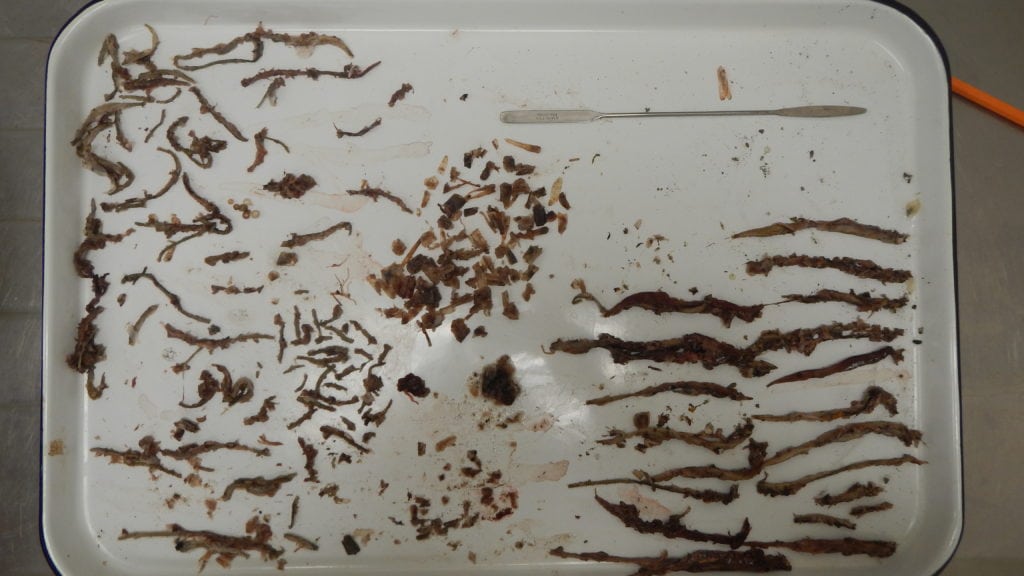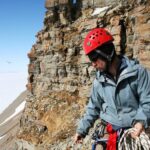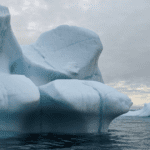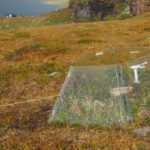
Snow says that belugas have been known to inhabit the waters surrounding Ulukhaktok, but hunting a whale usually only happens once every few years. Between 2000 and 2012 only seven whales had been harvested. The combination of unusually clear weather and belugas swimming in shallow water allowed for the fruitful harvest during July and August of 2014.
The beluga population in the western Arctic is estimated to be around 40,000, and fewer than 100 individuals are typically harvested in a year. “There are strong wildlife management practices that are in place in each of the communities,” says Snow, so the Ulukhaktok harvest doesn’t pose any kind of conservation concern. “It was actually the opposite of a concern; there was excitement and joy that they actually came in close enough to be harvested by communities that didn’t normally have a chance.”

Lisa Loseto analyzes the stomach content of beluga.
The researchers took a two-pronged approach to studying the potential drivers of the rare event: first they recorded local, Indigenous knowledge about feeding behaviour and diet, and second they analyzed the tissue samples and stomach content.
Interviews with eight local hunters began with background information on their experience with harvesting and preparing beluga. The hunters were then asked to mark the location of beluga sightings and harvests on a map and included information on feeding behaviour.
“The people that go out and hunt—they are the eyes and the hands and the feet that go out on the land,” says Snow. “It couldn’t work any other way—Indigenous knowledge is not just complementary or integrated, it’s the very fibre of how work can properly get done up here.”
When opportunistically sampling the belugas, the researchers collected skin, blubber, muscle, and jaws to determine the sex and age of the whales, and 12 beluga stomachs were analyzed for content. “One of the exciting things about this situation is that we were able to look in these whales’ stomachs that actually had prey items in them,” says Lisa Loseto, the lead author of the study. Whale stomachs from the Mackenzie Estuary had been monitored for the over 40 years, but these samples yielded largely empty stomachs.
The researchers were surprised to find the beluga stomachs full of sand lance, a thin, northern fish, at a 92% occurrence frequency. This was surprising as the main prey item of beluga was believed to be Arctic cod. The researchers hypothesize that the beluga had shifted their geographic distribution in the Beaufort Sea and modified their diet to accommodate for the reduced availability of Arctic cod documented that summer.
“We captured a rare event, but maybe soon to be a normal event,” says Loseto. One of the big questions that remain to be answered is whether or not a diet consisting largely of sand lance or a prey species other than Arctic cod will be enough to sustain the beluga population.
-

-
Sand lance, one of the prey items of beluga.
-

-
Partially digested fish and otoliths from beluga stomachs.
Read the full paper: Diet and feeding observations from an unusual beluga harvest in 2014 near Ulukhaktok, Northwest Territories, Canada in Arctic Science.
Photoss courtesy of Lisa Loseto.








